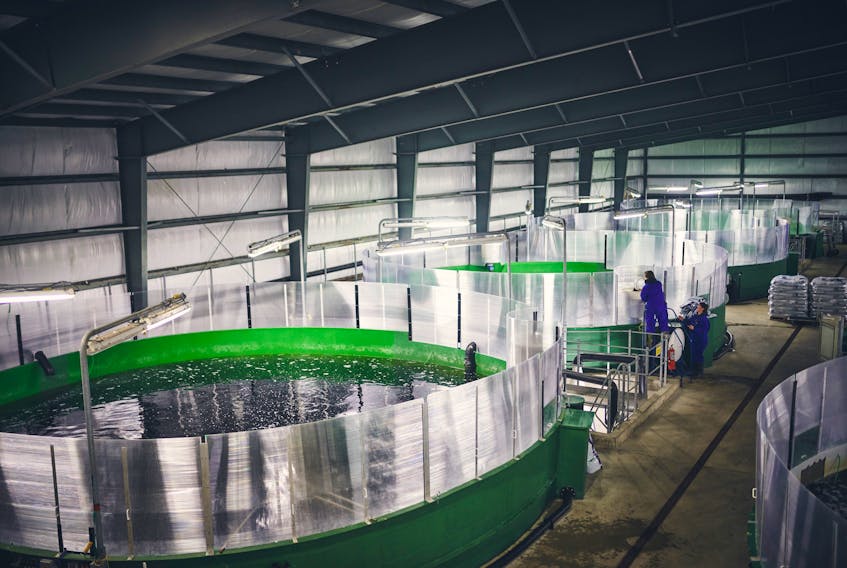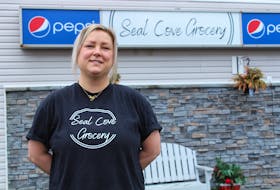They may have different views but aquaculture's fans and foes agree on one thing, the need for federal legislation specific to fish-farming.
The industry is currently regulated by the Department of Fisheries and Oceans (DFO) through the Fisheries Act.
However, both the Canadian Aquaculture Industry Alliance (CAIA) and Atlantic Salmon Federation (ASF) say that Act, with a primary focus to manage and protect wild fisheries and species, is just not cutting it.
The Canadian government has started a public consultation process to help develop an Aquaculture Act.
In a discussion paper on its website, DFO said the proposed Aquaculture Act would define in Canadian federal law — some for the first time — the many aspects of aquaculture, including definitions of aquatic species and the practice of aquaculture itself.
“It is proposed that the Act would also be forward-looking by being inclusive of emerging aquatic species for cultivation, as well as enabling aquaculture in Canadian offshore waters.”
You can find the discussion paper here.
Industry alliance president Timothy Kennedy said in an interview that Canada is the only aquaculture producer without a stand-alone act.
And the number of departments, federal and provincial, involved in regulating the industry right now can be cumbersome, and confusing, he said.

First there's the Fisheries Act, enforced by DFO, There are Transport Canada regulations to follow and provincial government departments, from environment to municipal affairs, play a role.
Other departments and rules govern fish health.
“Fish health has touchpoints with the Canadian Fish Inspection Agency, Health Canada and Environment Canada, but not much with DFO,” said Kennedy.
He said it would be a great improvement for the industry if one department took the lead to coordinate and work with other departments on management and oversight of the industry.
Kennedy added the CAIA believes Fisheries and Oceans does not necessarily have to be the department leading aquaculture.
The federal agriculture or industry departments might be a better fit, he said.
“We see ourselves as farmers of the water (and) what we don’t have is a department that explicitly has the mandate to support the sustainable growth of our sector.”
He points to Norway, a global leader in aquaculture, where the industry department is in charge.
“They have a very active industry and jobs growth focus for the sector. And they are 10 times bigger than us in terms of production of salmon.”
According to the CAIA, Canada is currently the fourth-largest producer of farmed Atlantic salmon in the world, but 26th overall in terms of overall aquaculture production.
DFO statistics for 2018 show finfish aquaculture production (salmon and trout) was valued at $1.3 billion and shellfish aquaculture (mussels, clams, oysters and scallops) was worth about $100 million.
The world is demanding more protein from the ocean while wild fisheries are flat or declining. Kennedy says that means getting aquaculture right is more important than ever.
According to a United Nations report on the state of world fisheries and aquaculture, aquaculture has been the main source of fish available for human consumption since 2016.
“In 2018, this share was 52 percent, a figure that can be expected to increase in the long term,” the report stated.
According to the report, world fish consumption was about 158 million tonnes in 2018 and is expected to increase by 18 percent by 2030. Aquaculture production is projected to reach 109 million tonnes by 2030, an increase of 32 percent (20 million tonnes) from 2018 levels.
“Canada has to get in the boat on this one,” said Kennedy. “An Act is very important for being a statement from the federal system that they recognize the future growth of seafood is from farming.
“What we have with DFO right now is a lot of confusion around mandate and that absolutely has to be clarified.”
Farmed vs wild

But the Atlantic Salmon Federation says new legislation must also focus on the protection of wild salmon stocks,
The New Brunswick-based federation has been worried about the impact of salmon farms wild salmon for years.
Federation spokesman Neville Crabbe said any new legislation should clearly define who’s responsible for protecting wild salmon.
The group feels that responsibility should rest with DFO.
“A federal Aquaculture Act must ensure a constitutionally-valid separation of powers, with the provinces overseeing the orderly conduct and development of the industry (including the promotion of the industry and its products), and with federal legislation focusing exclusively on the federal obligation to protect fish and fish habitat from the impacts of aquaculture.
“Such a separation of powers should be explicitly recognized in legislation and operationalized with updated federal-provincial agreements.”
Crabbe said the current Canadian laws around aquaculture are insufficient to protect wild fish and the environment from the negative effects of the (open-net pen salmonid) aquaculture.
The ASF, collaborating with over 20 other salmon interest groups, outlined many suggestions for legislative improvement in a submission to the DFO’s preliminary consultations last year.
According to the ASF submission to DFO, “Canada lags behind the rest of the world in terms of legislation, regulations, and policies aimed at protecting wild salmon from the impacts of open net-pen salmon aquaculture.
“Both DFO and the provinces appear to manage the industry on the basis that it poses a low risk to wild Atlantic salmon and their habitat. Consequently, Canada is not meeting its legislative obligation under the Fisheries Act to protect wild Atlantic salmon from the effects of aquaculture.”
The ASF continues to be concerned about escapes from salmon aquaculture sites, and disease outbreaks in open-pen nets and potential impact on wild populations, citing several academic studies to support their position on these issues.
The Salmon Federation also suggests an Aquaculture Act should include ‘triggers” for environmental assessment of aquaculture sites.
The ASF said that, except for Newfoundland and Labrador where an Environmental Assessment process is in place for aquaculture projects with a land-based component, environment assessment laws do not adequately cover the installation of new open net pens for salmon farms.
“We note that new marine open net-pen facilities typically undergo a site assessment to ensure their suitability for aquaculture prior to development; however, this is vastly different than a robust, transparent, public EA process aimed at identifying and mitigating environmental impacts.”
Therefore, the ASF recommends the new act include “clear, appropriate, and meaningful triggers for EA for open net-pen salmonid aquaculture facilities and major expansions of/changes to existing facilities.”
Both the CAIA and ASF will be making formal presentations to the public consultation process launched by DFO in August.
That process is open to the public.
The deadline for public comments is Jan. 15, 2021.









